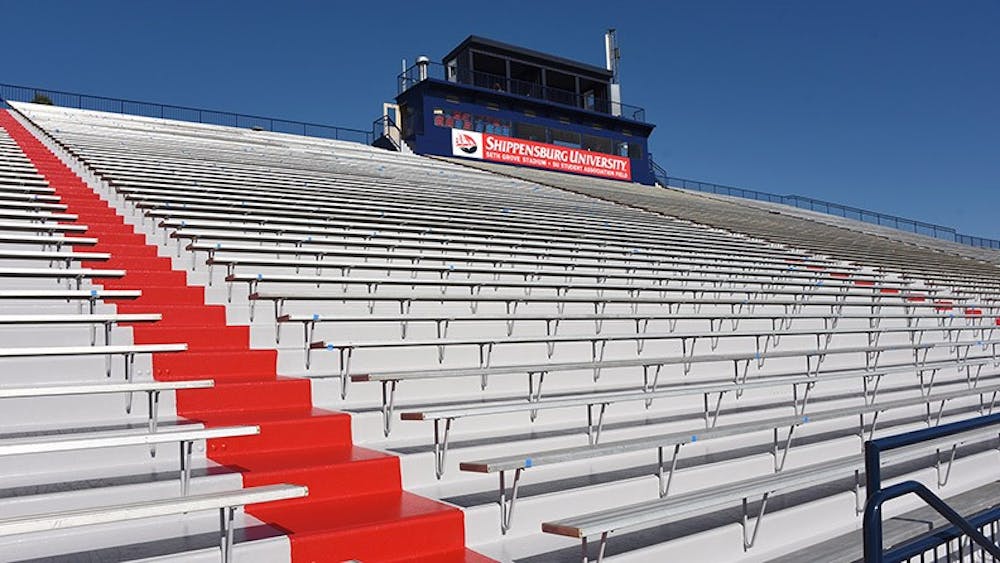The COVID-19 coronavirus pandemic continues to make its mark on recruiting at Shippensburg University.
With the uncertainties that come with the virus, recruiting coordinators at SU were forced to make changes, adapt to the unusual situation and overcome hurdles they have never faced before.
With all levels of the sports world being shut down last March when the pandemic started gaining ground, recruiting was not on the forefront of anyone’s mind. There were still many questions to be answered about the virus itself. Plus, there was no recent film for schools to watch.
But once officials gathered more information, sports started coming back into the picture. Recruiting began to re-make its appearance with limitations. The biggest hang-up for recruiting coordinators remains the inability to see athletes in action regularly.
“This has not been a normal recruiting process,” SU football recruiting coordinator Anthony Johnson said.
Once September rolled around, the NCAA Division II “quiet period” was lifted and normal recruiting calendars returned Sept. 1. This allowed Johnson to revamp his recruiting to some capacity. The live streaming of high school contests – due to limited attendance in order to stem the spread of the coronavirus– also provided another outlet to watch athletes perform in real time.
However, it still was not the same. Sports across the board continued to be affected by the seemingly unforgiving virus.
Spring sports were hit hardest. And for soon-to-be collegiate athletes, that meant no senior high school season or that last chance to showcase their talent in front of college scouts.
Not only was it a change for potential collegiate athletes, but recruiting coordinators like SU baseball’s Sean Williamson, had to adapt to the unforeseen circumstances.
“It was a unique situation. The way we had to recruit completely changed,” Williamson said. “Since we couldn’t go see some of these kids in person, we had to rely heavily on video.”
And that is exactly what happened. Williamson’s recruiting cycle fell into that NCAA “quiet period,” and the use of video and social media platforms as a way to deliver film to schools and coaches, exploded.
“This way of recruiting had been gaining momentum over the years, but this year, everyone really blew the roof off of it per se,” Williamson said.
In the uncertain times of a pandemic, there was no better way to do it. Some athletes even created Twitter accounts specifically for recruiting.
It was a 2-for-1. Social distancing was practiced, and athletes’ film still received the recognition it deserved.
“It’s just way easier to find information on kids now,” Williamson said. “To where a year ago, it was getting toward that direction, and every once in a while, you’d come into a hiccup here and there. But now, the kids understand the importance of video.”
Even with the use of video bursting onto the scene, the recruiting process was still missing a key component. It lacked that face-to-face interaction. Once that issue was recognized, the wheels started turning in the right direction.
For Johnson, a major part of the recruiting process is getting the prospects on campus to see the facilities, talk to their potential position coaches and show all of what Shippensburg has to offer. With SU hosting campus tours in limited fashion in the fall, officials granted permission for potential recruits to get those opportunities, minus some dining experiences.
The chances only applied to Pennsylvania athletes, however. With travel restrictions in place, out-of-state athletes did not qualify for those same opportunities.
“We struggled early on with getting kids on campus because of COVID,” Johnson said. “But as time went on, we were able to get some Pa. kids on campus. Unfortunately, we couldn’t do the same for out-of-state kids.”
“But we were lucky the university even allowed us to have on-campus visits. Some schools didn’t get that opportunity,” he added. “That was the major positive out of all of this.”
In wake of the positives, there is still some concern moving forward. That concern being how the recruiting scene will be impacted for years to come.
From Williamson’s perspective, he said he is unsure what the future holds.
“I think the process will get back to normal eventually. The way we go out and evaluate and see kids,” Williamson said. “Recruiting in regard to spots available, eligibility getting back, [it’s] kind of a log jam basically. There’s been a trickle down effect from junior colleges to the transfer portal.”
“I don’t know the answer to that [what will happen] and in regard to how long it will take to get back, or if it will ever get back to what it was,” he added. “Honestly, hopefully it does for the players’ sake.”
In Johnson’s eyes, he said he feels recruiting will revert to its traditional routine in some shape or form, but does not know if it will ever return to what it once was.
“I can’t say for sure it’s going to be exactly the way it was, but I think from my perspective and standpoint, we’re going to be OK,” Johnson said. “I don’t think this will hinder us in any way in the future.”




The Slate welcomes thoughtful discussion on all of our stories, but please keep comments civil and on-topic. Read our full guidelines here.